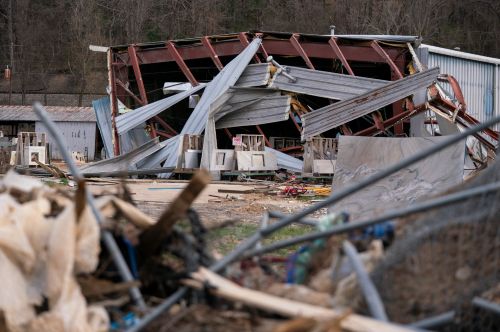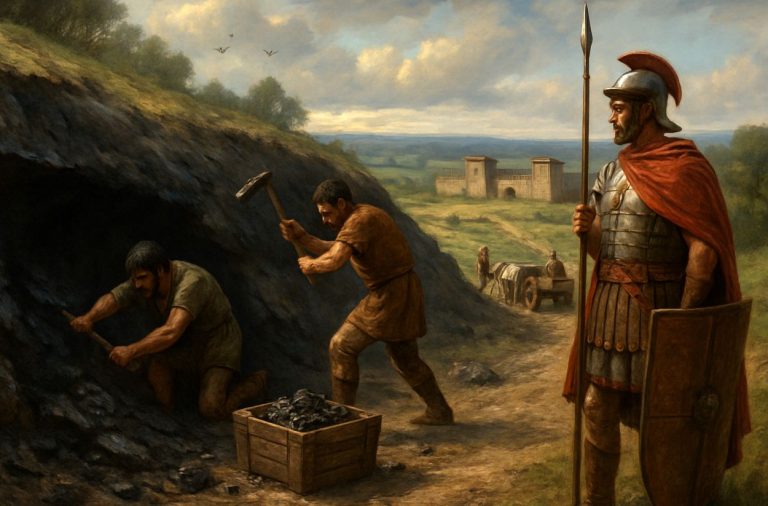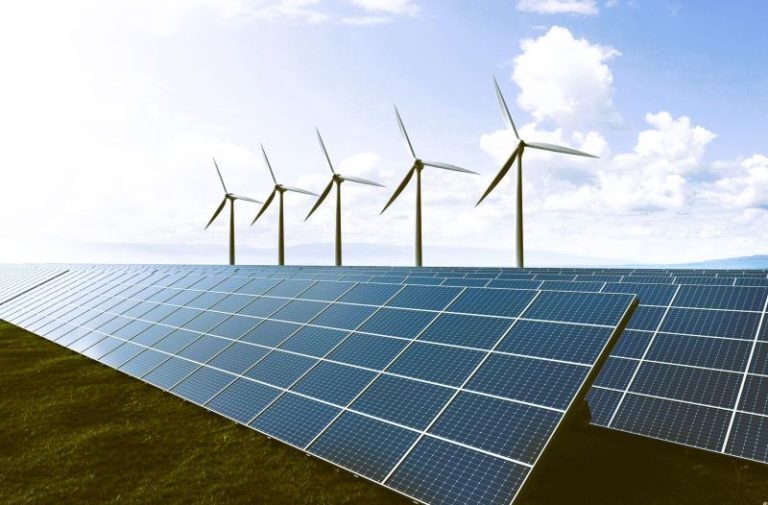

The costs of climate change are no longer theoretical, no longer projections in the fine print of economic models. They are as real as a lost harvest, a flooded highway, or a withdrawn insurance policy.

By Matthew A. McIntosh
Public Historian
Brewminate
Introduction
The bill for climate change is already on the table, and it is growing larger with every passing season. No matter how vigorously denialists attempt to wave it away, the economic weight of a warming planet is forcing itself onto balance sheets, insurance claims, and the daily operations of companies across the globe. Wildfires turn into billion-dollar disasters, floods erase decades of infrastructure investment, and heatwaves grind productivity to a halt. These are not future hypotheticals; they are today’s invoices, stamped “due immediately.”
The scope of these costs is staggering. Extreme weather events linked to climate change have already drained the global economy of trillions, and current estimates suggest losses of nearly $16 million every hour. The damages are not limited to public budgets or humanitarian crises. Private corporations, from agriculture giants to energy utilities, are watching supply chains buckle and insured risks spiral beyond what models had ever anticipated. As Time recently reported, more and more firms are acknowledging that climate disruptions are not abstract concerns but direct, material threats to profits, stability, and long-term survival.
Yet while businesses and scientists are racing to quantify and adapt, the political conversation often runs in reverse. In Washington, the Trump administration is already undoing climate rules and pulling back from investments in resilience, choosing short-term deregulation over long-term security. That retreat, however, cannot change the ledger. The losses are mounting regardless of ideology, and companies know they cannot afford to treat climate as just another political debate.
This article examines the unavoidable costs of climate change in detail: how economists now measure them, how different sectors feel their weight, how corporations are scrambling to adapt, and how political backsliding collides with the realities of markets. It is a story of risk and resilience, denial and reckoning, and of a future that, one way or another, will demand payment.
The Macroeconomic and Global Scale of Climate Costs
Climate change is no longer an abstract variable in economic models—it is a line item in national budgets and an unavoidable drag on global growth. Economists who once debated whether warming might produce modest benefits in northern latitudes now speak in terms of mounting liabilities. A recent study in Nature underscores that the damages already “committed” by past emissions are vast, meaning that even if emissions were halted today, the world would still face decades of escalating economic losses.
The sheer magnitude of those losses is sobering. Researchers at the University of Chicago estimate that unchecked warming could drain as much as $38 trillion annually by mid-century, a number that dwarfs the GDP of entire continents. Harvard economists have further argued that the cost curve is far steeper than earlier projections suggested, with even a single degree of warming potentially cutting global output by 12 percent. Such figures put to rest the illusion that adaptation can be deferred indefinitely without economic consequence.
Extreme weather events illustrate this toll in human and financial terms alike. Between 2000 and 2019, climate-linked disasters carried a price tag of nearly $3 trillion, translating into $16 million lost every hour. The costs are not distributed evenly. Wealthy countries often rebuild, while poorer nations struggle under debts deepened by each hurricane or drought, a disparity that exposes the brutal geography of vulnerability. Analysts have projected that, on current trajectories, climate damages could exceed $300 billion annually by 2030 and balloon to $1.6 trillion by 2050, with disproportionate harm falling on developing economies.
Even the United States, shielded by relative wealth, is not insulated from the reckoning. The Congressional Budget Office forecasts that unchecked warming could shave off roughly 4 percent of national GDP by the end of the century. That decline represents not only destroyed assets but also reduced labor productivity, shifting migration patterns, and lost economic potential. In effect, the nation’s prosperity is being taxed by the atmosphere, a levy imposed not by law, but by physics.
If there is one lesson from these figures, it is that delay multiplies cost. Each year of inaction compounds the losses, turning what might have been manageable adaptation into an ever-growing economic debt. The world is already paying interest on that debt; the question is how much principal remains to be added.
Sectoral Impacts and Cross-Cutting Risks
The economic burden of climate change becomes most visible when broken down into the everyday systems that sustain life and commerce. What looks like an abstract percentage loss of GDP translates, sector by sector, into higher food prices, fragile infrastructure, and disrupted supply chains. Each impact ripples outward, compounding costs in ways that financial models often underestimate.
Health is one of the clearest frontlines. Rising temperatures intensify heat stress, drive up hospitalizations, and worsen cardiovascular and respiratory illnesses. These pressures extend beyond public health systems into the private economy, cutting into labor productivity as outdoor and manual workers are forced to shorten shifts or halt work entirely. In the United States alone, the EPA has warned that these health-related damages represent a major category of climate-induced economic loss.
Agriculture faces a similarly stark calculus. Yields are increasingly unreliable, with droughts, shifting rainfall, and extreme heat undermining harvests across both developing nations and food-exporting giants. The result is not simply lower output, but volatility in global commodity markets that raises costs for consumers and businesses alike. What begins as a regional crop failure often cascades into global supply disruptions, straining food security and driving inflation.
Infrastructure and real estate lie at another fault line. Coastal flooding, sea-level rise, and stronger storms are already eroding property values, while forcing governments and homeowners into costly cycles of repair and retreat. Insurance companies, long the quiet accountants of natural disaster, are pulling back from high-risk regions. In some U.S. states, insurers have stopped issuing new policies altogether, leaving homeowners and businesses exposed to risks that the private market no longer finds profitable.
Finance and credit markets, once insulated from environmental shocks, are beginning to absorb climate risk in earnest. Banks and investors are increasingly aware that entire classes of assets may become “stranded” as changing weather patterns reduce their value. In Mexico, central bankers have even begun incorporating climate-linked disruptions into stress tests, recognizing that systemic risks can ripple across financial institutions (arXiv). These assessments suggest that climate change is not just an environmental or humanitarian issue, but a destabilizing force within the very architecture of global finance.
The most troubling aspect of these sectoral impacts is their interconnection. A single hurricane can destroy crops, damage infrastructure, displace populations, and trigger supply chain breakdowns all at once. Economists describe this as the “cascade effect” of climate shocks, where costs in one domain amplify those in others, producing losses far greater than the sum of their parts. It is precisely this systemic nature of risk that makes climate change so difficult to insure, predict, or compartmentalize.
In short, the costs of climate change are not confined to any one industry or region. They spread like cracks through a foundation, invisible at first but eventually compromising the entire structure. And unlike traditional business risks, these cracks cannot be patched by diversification alone; they demand adaptation at a scale most economies have yet to contemplate.
Private Sector Exposure: Why Businesses Can’t Escape the Costs
For decades, corporate leaders treated climate change as a matter for policymakers or activists rather than boardrooms. The logic was simple: climate impacts felt too distant, too uncertain, or too diffuse to affect quarterly earnings. That calculation is now collapsing. Supply chains disrupted by floods, insurance premiums spiking after wildfires, and workers sidelined by extreme heat have forced companies to admit that climate change is not a “future risk” but a present liability. businesses across industries are discovering that climate shocks are increasingly material to profits, competitiveness, and survival itself.
Despite this growing awareness, corporate adaptation remains patchy at best. An S&P Global review found that only about a third of major firms disclose having any concrete adaptation plan, leaving the majority vulnerable to disruptions they can already see on the horizon. Where investment does occur, it is often concentrated in sectors directly exposed to physical risks, utilities fortifying power grids, or agribusiness firms experimenting with drought-resistant crops.
Private spending on adaptation is growing, but it remains a fraction of what is required. In several European coastal regions, for instance, nearly 300,000 businesses invested about €8.7 billion over four years to strengthen their resilience against sea-level rise. That spending produced measurable benefits, including improved regional stability and competitiveness. Yet globally, the private sector’s share of adaptation finance hovers around just 8 percent, far short of the estimated $366 billion needed annually to prepare for escalating impacts.
At the same time, companies face exposure not only from physical risks but from financial and legal ones. Transition risk, where assets lose value due to shifts in regulation or consumer demand, is already reshaping energy markets. Litigation against fossil fuel companies for their role in contributing to climate damages is proliferating worldwide, raising the prospect of costly liability. These pressures combine with reputational risk, as consumers increasingly demand accountability from the firms they patronize.
For some companies, adaptation is proving to be more than a defensive measure; it is a business opportunity. Analysts estimate that financing for resilience and adaptation could grow into a $2 trillion annual market, spanning everything from climate forecasting technologies to flood-proof construction materials. The firms that invest early may find themselves leading a sector that, unlike fossil fuels, only grows more indispensable as climate impacts mount.
Still, for the majority of corporations, climate adaptation remains reactive rather than strategic. Disasters strike, losses are tallied, and only then do investments materialize, often too late to avert the damage. The private sector may be awakening to climate reality, but the slowness of that awakening ensures that costs will continue to outpace preparedness.
Adaptation, Resilience, and Private Finance: What Works and What Doesn’t
If climate change is an economic debt already incurred, adaptation is the only form of payment available to reduce its interest. The logic is straightforward: every dollar spent preparing for climate shocks avoids far greater losses when disaster strikes. Yet turning that logic into sustained investment has proven uneven, with some businesses and governments moving quickly to strengthen resilience while others delay until catastrophe forces their hand.
Adaptation strategies range from the tangible to the systemic. In coastal cities, flood barriers, seawalls, and elevated construction projects attempt to blunt the impact of rising seas. Elsewhere, reforestation, wetlands restoration, and other nature-based solutions are being deployed to absorb floodwaters and stabilize ecosystems. On the technological side, innovations such as drought-resistant crops, advanced forecasting systems, and heat-resilient infrastructure are being tested to protect both people and profits. In principle, these measures not only reduce damages but also generate secondary economic benefits through job creation and technological development.
The economic case for adaptation is strong. Studies consistently find that avoided damages exceed the upfront cost of building resilience. Yet barriers remain: high initial capital requirements, fragmented responsibility, and regulatory uncertainty often deter businesses from acting early. Economists warn of an “invisible risk” problem, because climate costs are systemic and difficult to isolate, many firms underestimate their exposure until the losses become undeniable (arXiv).
Finance is the fulcrum on which much of this turns. Globally, the adaptation funding gap is enormous, up to $366 billion annually by some estimates. Governments have shouldered much of the burden, but public resources are insufficient to meet the accelerating pace of climate damages. That shortfall opens space for private finance, which has the capacity to transform adaptation into a growth sector. Analysts now estimate that climate adaptation and resilience could generate as much as $2 trillion annually in market opportunities, from resilient infrastructure to financial instruments designed to spread risk.
Some encouraging examples show what’s possible. In Europe, private companies that invested in adaptation infrastructure not only reduced vulnerability but also saw measurable boosts in competitiveness and stability. In the insurance industry, new models are emerging that reward resilience investments with lower premiums, effectively monetizing the benefits of foresight. Yet these remain exceptions rather than norms. Globally, private finance still accounts for less than 10 percent of adaptation spending, leaving most businesses dangerously underprepared.
The lesson is that adaptation works best when it is anticipatory, systemic, and scaled—but those conditions rarely align without clear incentives and strong governance. Governments can help by mandating climate risk disclosures, offering resilience subsidies, and developing public-private partnerships that spread costs more equitably. For businesses, adaptation cannot remain an afterthought or a branding exercise. It must be built into strategic planning with the same seriousness given to cybersecurity, supply chain management, or financial risk.
The alternative is a cycle of reaction and recovery that drains ever more capital with each disaster. In this sense, adaptation is not just a defensive posture but an investment in future stability. Those who embrace it stand to shape the markets of tomorrow; those who delay will find themselves paying compound interest on nature’s terms.
Political, Regulatory, and Ideological Headwinds
If markets are beginning to reckon with the reality of climate costs, politics often seems determined to look the other way. In the United States, the return of Donald Trump to the presidency has already produced rollbacks in environmental protections and climate rules, reflecting an administration more concerned with deregulation than resilience. But climate damages do not wait for electoral cycles. Hurricanes do not pause because subsidies are cut, and wildfires do not check regulatory calendars before burning through communities. Political denial does nothing to reduce the invoice; it merely shifts more of the bill onto future generations.
This inconsistency creates a climate of uncertainty that undercuts both public and private investment. When governments swing between ambitious climate policy and aggressive deregulation, businesses hesitate to commit resources to long-term adaptation. Energy firms, property developers, and insurers all struggle to plan when the rules of the game change every four years. The absence of stable incentives effectively raises the cost of resilience, slowing progress just as risks accelerate.
The headwinds are not only ideological but also structural. Adaptation and mitigation policies often raise questions of equity: who pays, who benefits, and who bears the heaviest burdens. Wealthier nations are better able to finance resilience projects, while poorer countries, already more vulnerable, face compounding debts as they rebuild after each disaster. International negotiations over “loss and damage” have tried to address this imbalance, but commitments frequently fall short of the scale of need, leaving many frontline communities exposed.
Domestically, similar tensions appear at the local level. In coastal states, for example, decisions about whether to subsidize flood insurance pit taxpayers against property owners, and questions of retreat versus rebuilding ignite fierce political battles. These debates reveal the deeper political economy of climate change: while everyone pays, not everyone pays equally, and the distribution of costs has become as contested as the science itself.
Layered onto these conflicts are the powerful interests of incumbent industries. Fossil fuel companies, real estate developers, and certain insurance lobbies have long resisted aggressive climate measures, framing them as threats to growth. In reality, their resistance often magnifies economic risk by delaying the very transitions that could stabilize markets. Yet their influence remains strong, shaping legislation and slowing the policy momentum that science and economics alike demand.
In short, political headwinds amplify the cost of inaction. They not only obstruct adaptation but actively raise its price by ensuring that investments are made late, piecemeal, or under crisis conditions. This is the paradox of climate denial in power: it does not reduce the economic burden of climate change but guarantees that the bill will be larger when it finally comes due.
Conclusion: Paying the Debt
The costs of climate change are no longer theoretical, no longer projections in the fine print of economic models. They are as real as a lost harvest, a flooded highway, or an insurance policy withdrawn from an entire region. Economists now speak in trillions, but what those numbers really measure is the erosion of stability itself: productivity cut short by heat, homes reduced to rubble by storms, supply chains severed by floods. Each figure is an accounting of lives disrupted and futures made more precarious.
What the evidence shows is unambiguous: denial does not protect economies, and delay only multiplies damage. Companies that once treated climate risk as too distant to matter are now forced to adjust their operations, disclose their vulnerabilities, and invest in adaptation. Governments that ignore these realities are not saving costs but inflating the bill, guaranteeing that the final reckoning will be harsher, more uneven, and more destabilizing.
The way forward is neither mysterious nor unattainable. Adaptation works. Every dollar spent on resilience saves many more in avoided losses. The private sector has opportunities not just to shield itself but to innovate, creating markets in resilience that could define the coming decades. Governments, for their part, can set the stage with consistent policies, climate-risk disclosure rules, and investments in public infrastructure that lower the cost of private preparedness. Investors, too, can direct capital toward firms that treat climate resilience not as an add-on but as a core strategy.
Above all, there must be an acknowledgment that climate change is not a partisan issue, nor an ideological debate. It is an atmospheric tax that spares no one, imposed not by legislatures but by physics. We cannot repeal it, we cannot lobby it away, and we cannot defer its payment. What remains within our control is how much of that bill we allow to accumulate before we act.
The choice is stark. Either the world begins to invest now (anticipating risks, spreading costs, and building resilience) or we continue down a path where each disaster compounds the debt. The longer denial persists, the more punishing the interest becomes. And unlike the debts of finance, there is no option to default. The payment will come due, one storm, one fire, one flood at a time.
Originally published by Brewminate, 10.08.2025, under the terms of a Creative Commons Attribution-NonCommercial-NoDerivatives 4.0 International license.


